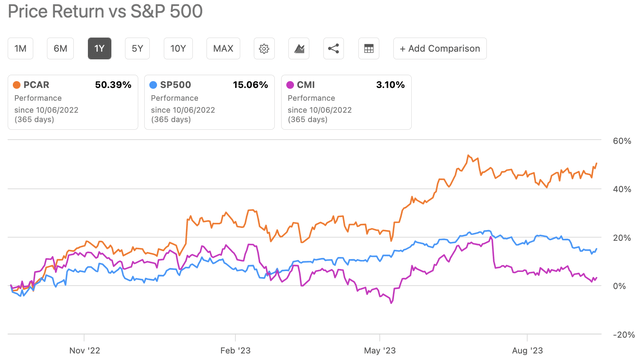Since March, 2020 when the COVID-19 pandemic drove the U.S. and the globe into a recession and tanked markets worldwide, there has been speculation about what Warren Buffet would be buying given the bargains. In March the Dow Jones Industrial Average (DJIA) dropped from an all-time high of 29,551 to 18,591. Many stock watchers and TV pundits speculated that this is the time when Warren Buffett would see value in stocks and put his company's sizeable cash to work.
Exhibit: Dow Jones Industrial Average (DJIA) One-Year Performance
(Source: Google Finance)
It has now become clear that Warren Buffett and his partner Charlie Munger were looking to strike a few deals at bargain prices, but the intervention by the U.S. Federal Reserve in March made it very easy for companies in all sorts of fiscal shape could easily raise billions of dollars.
Finally in July 2020 Warren and Charlie did strike a deal. They invested $10 billion in buying the natural gas pipeline assets of Dominion Energy. When almost every investor is shying away from investing in fossil fuel assets, Berkshire Hathaway sees value in it. It's going to take a long time for the world to move away from fossil fuels.
The past week has produced some stark headlines about the energy business. The Financial Times reported that BP was marking down the value of its oil and natural gas assets by $17.5 billion. Under the shadows of the stress that the oil business is in, Berkshire Hathaway makes a contrarian bet. Then came another headline, this time from a Federal District court. The court ruled that work on the Dakota Access Pipeline will have to stop until a comprehensive environmental review is completed.
Even before this decision, building anything related to the oil and gas industry in the U.S was an herculean task. This decision makes it harder. It is now assured that the work on this pipeline will not proceed until after the U.S. election. If Joe Biden is elected president then this pipeline may never get built. So, any oil and gas asset already in existence in the U.S. have just been elevated in value. This deal by Berkshire Hathaway has the potential to offer profitable returns for the company.
Disclosure: I own shares in Berkshire Hathaway and BP.












